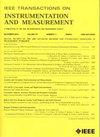Joint Distribution Alignment via Mutual Information for Cross-Device Fault Diagnosis
IF 5.6
2区 工程技术
Q1 ENGINEERING, ELECTRICAL & ELECTRONIC
IEEE Transactions on Instrumentation and Measurement
Pub Date : 2025-06-18
DOI:10.1109/TIM.2025.3580817
引用次数: 0
Abstract
Current data-driven fault diagnosis methods suffer from poor transferability. It is challenging to apply a model effective on one device directly to another. Many methods now employ domain adaptation algorithms to align their fault distributions for model transferability. However, most methods focus only on aligning either marginal or pseudo-labels-based conditional distributions, ignoring cases where both label and conditional distributions change, along with the unreliable nature of pseudo-labels. This oversight can lead to transfer failures. To tackle this, this article introduces an information theory-based joint distribution alignment model. The algorithm starts by maximizing mutual information between predicted categories and input samples for conditional alignment without pseudo-label involvement. Simultaneously, the model introduces virtual adversarial training with a penalty term to improve the robustness of prediction results. When label distribution changes, the model uses entropy values to assign data in categories unique to the target domain to “outliers,” thus preventing misalignment of these data. In experiments, this algorithm outperformed other domain adaptation-based methods.基于互信息的跨设备故障诊断联合分布对齐
现有的数据驱动故障诊断方法存在可移植性差的问题。将在一种设备上有效的模型直接应用到另一种设备上是具有挑战性的。目前,许多方法采用领域自适应算法来调整故障分布,以提高模型的可移植性。然而,大多数方法只关注对齐边缘或基于伪标签的条件分布,忽略了标签和条件分布都发生变化的情况,以及伪标签的不可靠性质。这种疏忽可能导致转移失败。为了解决这一问题,本文引入了一种基于信息理论的联合分布对齐模型。该算法首先最大化预测类别和输入样本之间的互信息,以便在不涉及伪标签的情况下进行条件对齐。同时,该模型引入了带有惩罚项的虚拟对抗训练,提高了预测结果的鲁棒性。当标签分布发生变化时,模型使用熵值将目标域唯一类别中的数据分配给“异常值”,从而防止这些数据的不对齐。在实验中,该算法优于其他基于域自适应的方法。
本文章由计算机程序翻译,如有差异,请以英文原文为准。
求助全文
约1分钟内获得全文
求助全文
来源期刊

IEEE Transactions on Instrumentation and Measurement
工程技术-工程:电子与电气
CiteScore
9.00
自引率
23.20%
发文量
1294
审稿时长
3.9 months
期刊介绍:
Papers are sought that address innovative solutions to the development and use of electrical and electronic instruments and equipment to measure, monitor and/or record physical phenomena for the purpose of advancing measurement science, methods, functionality and applications. The scope of these papers may encompass: (1) theory, methodology, and practice of measurement; (2) design, development and evaluation of instrumentation and measurement systems and components used in generating, acquiring, conditioning and processing signals; (3) analysis, representation, display, and preservation of the information obtained from a set of measurements; and (4) scientific and technical support to establishment and maintenance of technical standards in the field of Instrumentation and Measurement.
 求助内容:
求助内容: 应助结果提醒方式:
应助结果提醒方式:


